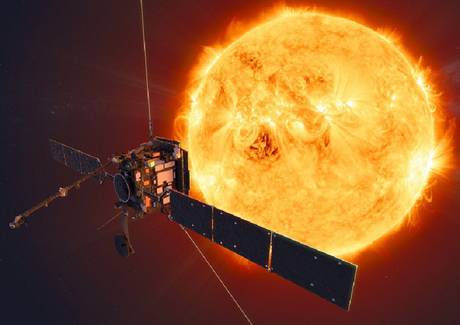Two 'jolts' of the Sun, or two massive ejections of particles from the outermost part of its atmosphere (CME), were filmed almost by chance by Solar Orbiter, the 'guardian' probe of the Sun launched in February 2020 by the European Space Agency (ESA) in collaboration with NASA to study our star closely.
Still waiting to begin its real scientific mission in November, Solar Orbiter took these images while it was in the point of orbit closest to the Sun (perihelion) last February 2021.
The proximity to the star gave the opportunity to check the instruments, especially the six remote sensing instruments that in this first phase of the mission are turned on only for calibration during limited time windows (while the four in-situ instruments that monitor the surrounding environment the probe have almost always remained on since the moment of launch).
During the close passage, however, Solar Orbiter found itself hidden behind the Sun and this slowed down the sending of data to Earth, which are still being analyzed. By a "fortunate coincidence", as ESA technicians underline, three of the remote sensing instruments have captured two mass ejections from the crown (CME): among these also the Coronograph Metis, created by the Italian Space Agency (ASI) in collaboration with the National Institute of Astrophysics (INAF) and with the National Research Council (CNR), several Italian universities and research institutes around the world. The same eruptions were also recorded by ESA's Proba-2 spacecraft, ESA and NASA's SOHO space telescope and NASA's STEREO-A, which from different angles can give a global view of these events.
The Solar Orbiter probe prepares to begin its scientific mission to the Sun in November 2021 (source: ESA / ATG medialab)
Studying coronal mass ejections is key to learning more about space weather, which can have deleterious effects on Earth's technologies and astronauts in orbit.
The Solar Orbiter mission, however, is destined to go much further: the satellite will make close observations of the Sun never attempted before, to capture the first images of the polar regions.

